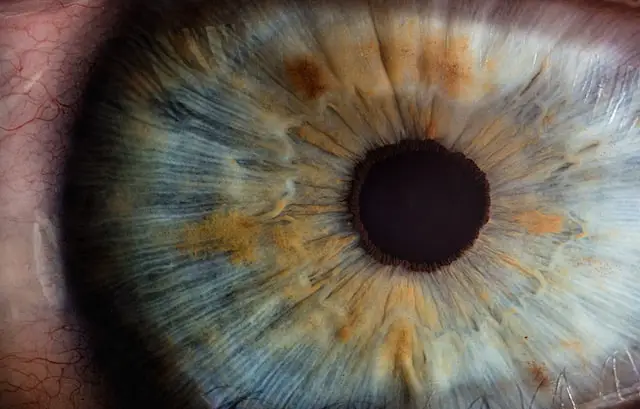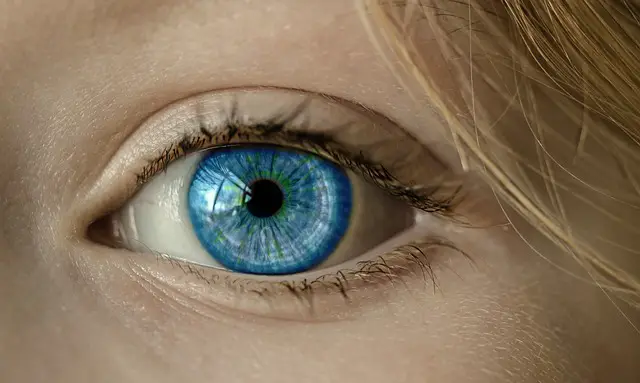The cornea is the transparent, dome-shaped outermost layer of the eye that covers the iris, pupil, and anterior chamber. The iris is the colored part of the eye that controls the amount of light that enters the eye by adjusting the size of the pupil.
What is the cornea?

The cornea is the transparent, dome-shaped outermost layer of the eye that covers the iris, pupil, and anterior chamber. It is located at the front of the eye and plays an important role in the eye’s overall function and vision.
The cornea is made up of several layers of tissue, including the epithelium, stroma, and endothelium. The epithelium is the outermost layer and provides protection against the environment, such as dust and bacteria. The stroma is the thickest layer and contains collagen fibers that provide structural support to the cornea. The endothelium is the innermost layer and regulates the amount of fluid in the cornea to maintain its shape and clarity.
The cornea also plays a crucial role in the eye’s ability to focus light, as it is responsible for refracting, or bending, light rays as they enter the eye. It accounts for about two-thirds of the eye’s total refractive power and is the primary factor in determining the eye’s overall focusing ability.
In addition to its refractive function, the cornea also has a high degree of sensitivity and is involved in the eye’s ability to detect touch and pain. It is also one of the few tissues in the body that does not contain blood vessels, instead receiving nutrients and oxygen directly from the tear film and aqueous humor.
Various conditions can affect the health and function of the cornea, including infections, injuries, and diseases such as keratoconus and Fuchs’ endothelial dystrophy. Treatment options may include medications, contact lenses, or surgical procedures such as corneal transplantation or refractive surgery.
What is the iris?

The iris is a thin, circular structure located in the front of the eye, behind the cornea and in front of the lens. It is the colored part of the eye and is responsible for regulating the amount of light that enters the eye by controlling the size of the pupil.
The iris is composed of two layers of muscle and connective tissue, with the outer layer consisting of pigment cells that give the iris its color. The amount of pigment in the iris determines its color, with variations ranging from shades of blue and green to brown and black.
The iris functions as a diaphragm, controlling the size of the pupil, which is the small, dark opening in the center of the iris. When light enters the eye, the iris muscles contract or relax, changing the size of the pupil and regulating the amount of light that enters the eye. In bright light, the iris constricts, making the pupil smaller to reduce the amount of light that enters the eye. In dim light, the iris dilates, making the pupil larger to allow more light to enter the eye and improve vision.
The iris also plays a role in the eye’s ability to focus on objects at different distances. As the eye focuses on near or far objects, the muscles of the iris adjust the size of the pupil to maintain a clear image on the retina.
Various conditions can affect the function and appearance of the iris, including inflammation, injury, and diseases such as iris melanoma or iritis. Treatments may include medications, laser procedures, or surgery, depending on the underlying cause of the condition.
The difference between the two
The key difference between the cornea and the iris is their location and function in the eye. The cornea is the transparent, dome-shaped outermost layer of the eye that covers the iris, pupil, and anterior chamber, and is responsible for refracting light as it enters the eye. The iris, on the other hand, is a thin, circular structure located in the front of the eye, behind the cornea and in front of the lens, and is responsible for regulating the amount of light that enters the eye by controlling the size of the pupil.
The cornea is clear while the iris is pigmented. The cornea also has no blood vessels, while the iris does. The cornea is responsible for most of the eye’s focusing power, while the iris controls how much light enters the eye. Finally, the cornea is a single layer of tissue while the iris is made up of multiple layers.
How do they work together?
The cornea and the iris work together to help the eye focus light. The cornea is the clear, curved surface at the front of the eye. It bends light that comes into the eye, which helps the eye focus. The iris is the colored part of the eye. It controls how much light comes into the eye.
Is the iris behind the cornea?
The iris is the colored part of the eye that helps to control how much light enters the eye. The cornea is the clear, outermost layer of the eye that helps to focus light. Although the iris is behind the cornea, it does not play a role in focusing light.
Does the cornea only cover the iris?
No, the cornea covers not only the iris but also the pupil and the anterior chamber of the eye. The cornea is the transparent, dome-shaped outermost layer of the eye that forms a clear covering over the front of the eye. It acts as a protective layer for the eye and helps to refract or bend the incoming light onto the lens of the eye, which then focuses the light onto the retina at the back of the eye. So, the cornea covers the entire front part of the eye, including the iris, pupil, and the anterior chamber.
What is the function of cornea iris and pupil?
The cornea is the clear, dome-shaped surface that covers the front of the eye. It plays an important role in focusing light onto the retina, the sensitive layer of tissue at the back of the eye that converts light into electrical impulses and sends them to the brain. The iris is the colored part of the eye that surrounds the pupil and controls how much light enters the eye. The pupil is a small, round opening in the center of the iris that allows light to enter the eye.
What is the function of the cornea?
The cornea serves several important functions in the eye, including:
- Protecting the eye: As the outermost layer of the eye, the cornea acts as a protective barrier against dust, dirt, and other foreign objects that could damage the eye.
- Refracting light: The cornea plays a key role in bending, or refracting, light as it enters the eye. This helps to focus the incoming light onto the lens, which then focuses it onto the retina at the back of the eye. The cornea accounts for about two-thirds of the eye’s total refractive power and is the primary factor in determining the eye’s overall focusing ability.
- Maintaining clarity: The cornea is responsible for maintaining the clarity of the front of the eye, which is essential for good vision. It does this by constantly removing excess fluid and maintaining a proper balance of nutrients and oxygen.
- Providing sensory input: The cornea has a high degree of sensitivity and is involved in the eye’s ability to detect touch and pain.
The cornea plays an essential role in the eye’s ability to see and function properly. Various conditions can affect the health and function of the cornea, including infections, injuries, and diseases such as keratoconus and Fuchs’ endothelial dystrophy. Treatment options may include medications, contact lenses, or surgical procedures such as corneal transplantation or refractive surgery.
What is the function of the iris?
The iris is a structure in the eye that has several functions, including:
- Controlling the amount of light that enters the eye: The iris regulates the amount of light that enters the eye by controlling the size of the pupil, which is the black circular opening in the center of the iris. In bright light, the iris contracts and the pupil becomes smaller to reduce the amount of light that enters the eye, while in dim light, the iris dilates and the pupil becomes larger to allow more light to enter the eye.
- Protecting the eye: The iris helps to protect the eye by acting as a physical barrier between the outside world and the sensitive structures inside the eye.
- Providing color to the eye: The iris is responsible for giving the eye its distinctive color, which can range from blue, green, brown, or hazel, depending on the amount of pigment present in the iris.
- Assisting with accommodation: The iris also helps to adjust the shape of the lens in the eye to focus on objects at different distances, a process known as accommodation.
The iris plays an important role in regulating the amount of light that enters the eye and providing protection and color to the eye. Various conditions can affect the function and appearance of the iris, including inflammation, injury, and diseases such as iritis and uveitis. Treatment options may include medications, laser procedures, or surgery, depending on the underlying cause of the condition.
What are the two parts of the iris?
The iris has two parts: the anterior segment and the posterior segment. The anterior segment is made up of the front half of the iris and includes the pupil. The posterior segment is made up of the back half of the iris and connects to the ciliary body, a ring-shaped structure that contains muscles that control the shape of the lens.
Featured Image By – Photo by Brands&People on Unsplash








